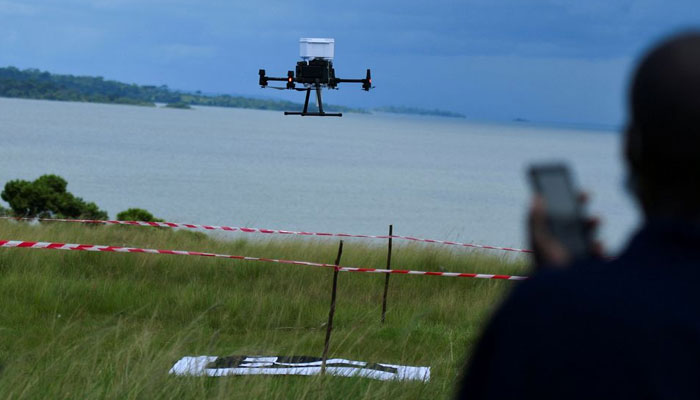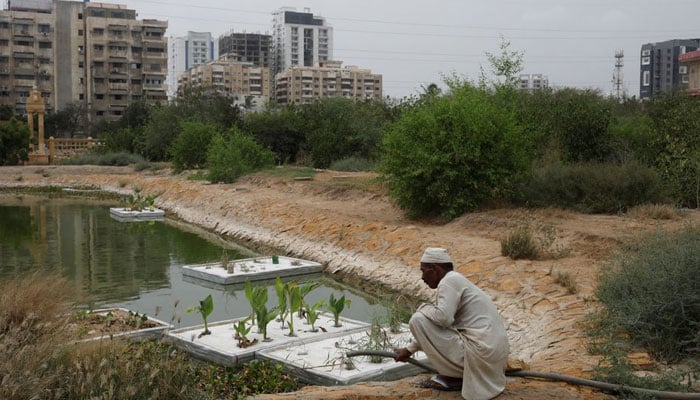[ad_1]
It’s hot. Dangerously hot for millions of people across all continents, and it’s dangerously hot in the Arctic and the Antarctic, our planetary thermostats.
If people can keep cool, and if food and medicines are kept cold, they can be safe. If not, then at best, productivity falls away; at worst, morbidity and mortality rise. The stories mount of records broken, of never-experienced heat from Pakistan and northern India to the UK, Spain, France, British Colombia, Argentina, China and the United States — every continent.
In a powerful piece of journalism, Louise Callaghan for the Sunday Times in the UK compared life in two cities in a region that is blisteringly hot, and getting ever hotter: Basra, where electricity and cooling are not widely available, and Kuwait City, just 80 miles away, an island of air-conditioned comfort.
When the World Bank started looking at the specific economic impacts of a warmer world a decade ago, it pointed to extreme heat as one of the major threats to continued economic development. Specifically, it noted Kuwait Bay in the Persian Gulf as one of those regions set to experience more extreme heat in the future. What that work did not foresee was extreme heat blanketing every region of the world so soon. In the United States, the National Integrated Heat Health system recorded more than 120 million people at risk from extreme heat on 3 August 2022.

There is more commentary and focus on solutions and a growing cadre of city and regional leaders tackling cooling as it threatens lives and livelihoods and the competitiveness of their local economies. And while there is growing national discussion and awareness, many countries are scrambling to respond.
The good news is that we have a good enough grasp of the cause of the problem: carbon emissions. Many of the solutions we can deploy are at hand. A growing global community of researchers, engineers, entrepreneurs and businesses, investors and philanthropists are working on integrative solutions, recognising that our current systems are warming the planet and only keeping some people and places cool.
Ensuring that high-end air conditioning is efficient and non-polluting is not enough. Billions of people in low-income countries aspire to cooling, and their only affordable options are inefficient appliances with polluting refrigerants. We solve the cooling challenge by solving it for everyone, not retiring into our suburban coolers to survive urban ovens.
Since 2016, there has been growing global collaboration on cooling solutions for all that has brought together philanthropists and groups working on cooling solutions. Last year, Rwanda, the UK, the United Nations Environment Programme (UNEP), and research partners around the world established The Clean Cooling Collaborative. Headquartered in Rwanda, it focuses on developing and deploying cold chain and cooling solutions from farm to fork – helping support healthy and affordable diets, improving farmer income and increasing productivity. The centre estimates that no cold chain results in 12% of food production losses globally, enough to feed one billion people, at a time when food insecurity is rising.

Beyond the food chain, 25% of vaccines are wasted worldwide due to poor or non-existent cold chains, which seems more staggering in a world reeling from COVID-19 and at risk from future zoonotic disease pandemics. Solutions include shortening the cold chain by using drones to deliver vaccines to where they are needed more quickly and solar-generated ice-based mobile cold storage systems.
Sustainable cooling solutions require us to rethink our energy and transport systems, food and medicine cold chains, our built environment, and how we design cities.
First, efficiency: cooling must be hyper-efficient if the need for more cooling isn’t to drive up energy demand in a way that produces more warming through energy systems emissions. Efficient and affordable (and non-polluting) air conditioning must be deployed rapidly, including mobile air conditioning. Governments need to support innovation and extend higher energy efficiency standards over more of the global economy than is the case today. We also need more efficient refrigeration and to keep those condenser coils clean.
This hyper-efficient world needs to run off intelligent, clean energy grids. Clean energy grids power heat pumps and district cooling systems, where cold water running through pipes can keep whole building complexes cool. They will run efficient fans and air conditioners and interact with thermostats to respond to energy demand.
Second, greening. Nature is our friend, and greener cities are cooler. Cities and towns can have green roofs, create green spaces and weaken the heat island effect from buildings and infrastructure absorbing heat. Many cities have announced large-scale tree planting in recent years, and there are lessons learned about tree planting and stewarding as well as protecting existing trees and urban forests.
In cooling terms, trees are critical elements of social infrastructure. Trees planted in low-income and marginalised neighbourhoods are investments in social equity: they clean the air and lower temperatures. We need to pick up the pace. According to American Forests, we need to plant 31.4 million trees a year in urban areas in the U.S. alone.
Greener cities also need to be designed with cooling in mind. If not a green roof, then a white one to reflect heat away from the building below. Or different roofing materials with cooling effects. And new paving materials, alongside passive buildings with awnings for shade, smart windows, or new glass that reduces glare and heat absorption.
The increase in collaboration around cooling is largely the result of the diplomatic success of the Kigali Amendment of the Montreal Protocol, which phased out hydrofluorocarbons, or HFCs. This pollutant accelerates the warming effect of carbon emissions. New generations of refrigeration can produce no waste heat, and run without polluting refrigerants. In low-income countries, shared refrigeration at the community level and solar mobile cooling are all growing.
The bottom line: with extreme heat events increasing in frequency and intensity, warming the planet to stay cool is not cool. Changing how we generate energy and use it is. If we don’t urgently ramp up clean energy systems, change our built environment, invest in the equity of trees and green cities, and deploy the many cooling technologies that have already been developed, we risk liveability. Indeed, for the most vulnerable in communities around the world, what’s at stake is not liveability, but survivability.
[ad_2]

